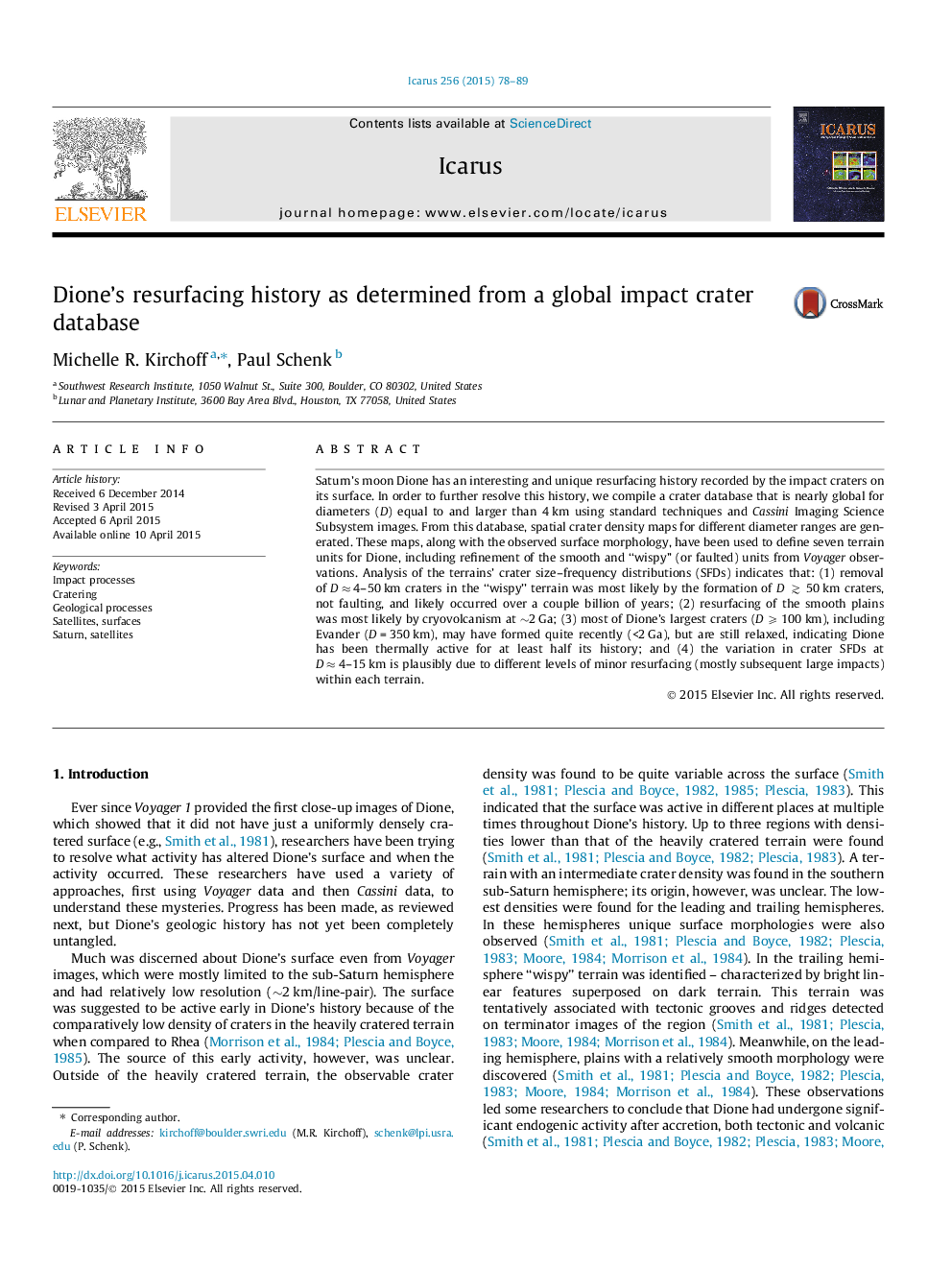| Article ID | Journal | Published Year | Pages | File Type |
|---|---|---|---|---|
| 1773038 | Icarus | 2015 | 12 Pages |
•Global impact crater database is presented for Dione for diameters larger than 4 km.•Based upon crater density and surface morphology we define 7 terrain units.•Dione has been thermally active for at least half of its history.•Several recent large craters have erased many small craters ∼4–15 km on Dione.
Saturn’s moon Dione has an interesting and unique resurfacing history recorded by the impact craters on its surface. In order to further resolve this history, we compile a crater database that is nearly global for diameters (D) equal to and larger than 4 km using standard techniques and Cassini Imaging Science Subsystem images. From this database, spatial crater density maps for different diameter ranges are generated. These maps, along with the observed surface morphology, have been used to define seven terrain units for Dione, including refinement of the smooth and “wispy” (or faulted) units from Voyager observations. Analysis of the terrains’ crater size–frequency distributions (SFDs) indicates that: (1) removal of D ≈ 4–50 km craters in the “wispy” terrain was most likely by the formation of D ≳ 50 km craters, not faulting, and likely occurred over a couple billion of years; (2) resurfacing of the smooth plains was most likely by cryovolcanism at ∼2 Ga; (3) most of Dione’s largest craters (D ⩾ 100 km), including Evander (D = 350 km), may have formed quite recently (<2 Ga), but are still relaxed, indicating Dione has been thermally active for at least half its history; and (4) the variation in crater SFDs at D ≈ 4–15 km is plausibly due to different levels of minor resurfacing (mostly subsequent large impacts) within each terrain.
